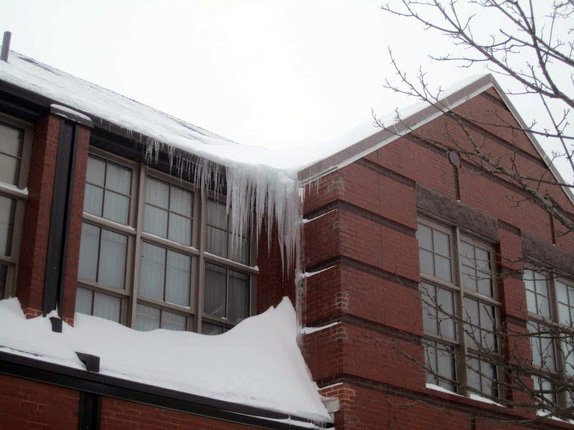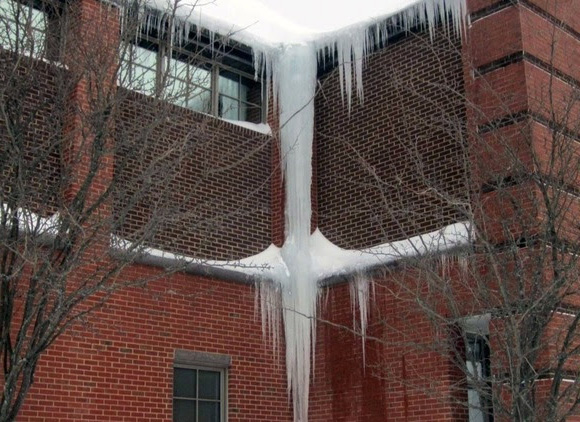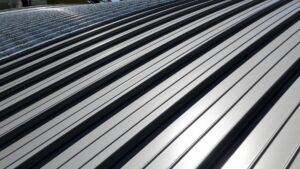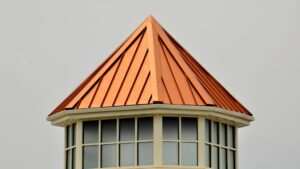What Are Ice Dams and How Do They Form?

Ice dams (large icicles or blocks of ice along roof eaves) are a common occurrence in the winter and can lead to significant damage to your building if not constructed appropriately.
Accumulated snow on a roof acts as insulation. Heat from the underlying space, ambient heat, and solar radiation all contribute to melting the snow. This meltwater runs down the roof towards eaves and gutters. Once it reaches the cold, uninsulated overhangs, it freezes and forms a layer of ice. As this continually happens, the ice height increases, creating a dam that stops drainage. This pooled water backs up and flows under the dry laps in the roofing, resulting in interior leakage and damage. The damage is most severe in areas with frequent freeze-thaw cycles.

Preventing Ice Dams (Long-Term)
There are several methods to prevent ice dams, including:
- Insulating the ceiling line to keep attic space and the roof surface cold.
- Ventilating the attic or roof framing cavity to keep the attic cold.
- If re-roofing, specifying the correct materials at possible ice dam locations to prevent leakage through roof underlayment laps.
- Heating portions of the roof that could be susceptible to ice dam formation.
Preventing Ice Dams (What You Can Do Right Now)
You may be thinking: that previous advice is is helpful if I had more time to make the changes, but I need to deal with this ice dam situation right now. Here’s some proactive measures that can be implemented at your building quickly.
- Develop a monitoring plan to do weekly or before and directly after storms.
- Remove debris, leaves, and sticks from gutters and downspouts so water can flow freely through the systems.
- Minimize snow on the roof, especially near eaves and overhangs. A roof rake can be used to pull snow off the roof from the ground. Be sure to take care to not damage the roof however.
- Clear snow & ice from gutters and downspouts so the meltwater can exit the roof.
If you notice an ice dam has already formed and is creating visible leaks, it is best to have a qualified roofing contractor remove it. Removing ice with hammers, chisels, and other tools is not recommended as there’s a high probability of damaging your roof. The best course of action is to let it melt naturally if possible. You should never attempt to access a snow or ice covered roof.
Perform an Evaluation
A professional evaluations should be performed to determine what is causing the ice dams and assess the scope of repairs prior to beginning work. Ice dam repairs usually consist of improving ceiling insulation, vapor barriers, and/or improving attic ventilation.
If you are currently experiencing leaks caused by ice dams or you’re concerned with the potential for ice dams to form, please don’t hesitate to reach out to us. Eagle Rivet is more than happy to assist with all of your building enclosure, structural engineering, and civil engineering needs.




